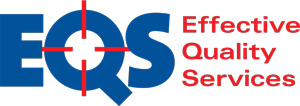Food safety audits are essential for U.S. food manufacturers and processors. Whether conducted by regulators, certifiers, or customers, audits confirm compliance and protect public health. Yet many companies repeat the same food safety audit mistakes that can result in costly failures. This article reviews the most common pitfalls, explains how to avoid them, and outlines what auditors look for during food manufacturing compliance audits.
Common Mistakes in Food Safety Audits
- Incomplete Documentation
Missing or disorganized records for HACCP plans, sanitation logs, and corrective actions make it impossible for auditors to verify compliance. - Gaps in Employee Training
Staff who are unfamiliar with sanitation, allergen controls, or CCP monitoring often create audit findings. Written procedures must align with actual practices. - Neglecting Internal Audits
Companies that skip mock inspections miss opportunities to find weaknesses before external auditors do. - Weak HACCP Plans
Critical Control Points (CCPs) are sometimes vague, unsupported by science, or not monitored properly. - Facility and Sanitation Failures
Issues like rusted equipment, condensation, pests, or poor hygienic design are frequent audit triggers. - Supplier Oversight Lapses
Ingredients from unvetted suppliers or poor traceability systems expose facilities to serious risks. - Slow Corrective Actions
Findings must be addressed quickly with documented root causes, fixes, and verification to avoid repeat issues. - Failure to Stay Current
Regulatory updates and third-party standard revisions change frequently. Companies that don’t adapt risk falling behind.
How to Avoid Audit Failures
Preventing audit failures requires both solid systems and a proactive mindset:
- Run Internal Mock Audits: Replicate external inspections to spot gaps early.
- Invest in Training: Reinforce knowledge of HACCP, hygiene, and allergen control.
- Maintain a HACCP Audit Checklist: Cover hazard analysis, CCP monitoring, corrective actions, and recordkeeping.
- Keep Facilities Audit-Ready: Prioritize sanitation, equipment upkeep, and hygienic layout.
- Strengthen Supplier Controls: Require certifications, perform supplier audits, and maintain real-time traceability.
- Act Fast on Non-Conformances: Define corrective steps, assign responsibility, and document effectiveness.
- Stay Ahead of Regulations: Monitor FDA, USDA, and GFSI updates and revise your systems accordingly.
- Foster a Food Safety Culture: Make audit readiness an everyday practice, not a once-a-year event.
What Do Auditors Look For?
Auditors consistently evaluate these areas during food manufacturing compliance audits:
| Area | Key Focus | Why It Matters |
|---|---|---|
| HACCP / Hazard Analysis | Proper hazard ID, CCPs, and critical limits | Ensures risks are controlled |
| Monitoring & Corrective Actions | Frequency, accuracy, corrective steps | Confirms systems work in practice |
| Sanitation & Facilities | Equipment hygiene, pest control, workflow | Prevents contamination |
| Documentation & Records | HACCP, cleaning logs, training, supplier docs | Provides verifiable evidence |
| Training & Hygiene | Employee knowledge and behavior | People are the front line of safety |
| Supplier Controls | Specifications, certifications, recalls | Protects supply chain integrity |
| Verification & Validation | Internal audits, calibrations, environmental monitoring | Confirms plans are effective |
| Regulatory Compliance | FSMA, USDA, and GFSI standards | Avoids violations and penalties |
Trends and Data
Audit performance matters because food safety risks are rising:
- Foodborne illness hospitalizations and deaths in the U.S. rose sharply in 2024 compared to the previous year.
- Recalls linked to pathogens such as Salmonella and Listeria remain among the leading public health threats.
- A 2024 multistate Listeria outbreak tied to deli meats underscored how sanitation lapses can escalate into nationwide crises.
These statistics highlight why avoiding food safety audit mistakes is critical for both compliance and consumer trust.
HACCP Audit Checklist: Key Points
A simplified checklist to guide preparation:
- Documented hazard analysis and updated HACCP plan
- Clear CCPs with justified critical limits
- Routine monitoring and corrective action records
- Verified training and employee hygiene practices
- Sanitation logs and preventive maintenance schedules
- Supplier specifications and traceability records
- Internal audits, calibrations, and environmental monitoring
- Evidence of regulatory and standard compliance
Building a Culture of Readiness
Beyond checklists, long-term audit success depends on culture. Leadership must invest in food safety, encourage cross-department accountability, and use technology for real-time monitoring. Continuous improvement—treating findings as opportunities rather than failures—is what distinguishes companies that pass audits consistently.
Food safety audits are not simply compliance hurdles—they are opportunities to safeguard public health and strengthen business credibility. By addressing common pitfalls, maintaining strong HACCP systems, and fostering a culture of continuous readiness, U.S. food companies can prevent failures and build trust with regulators, certifiers, and customers.
Effective Quality Services helps manufacturers prepare for food industry audits, develop HACCP audit checklists, and improve food manufacturing compliance audits.
Contact us to get started on strengthening your audit readiness and protecting your reputation.

